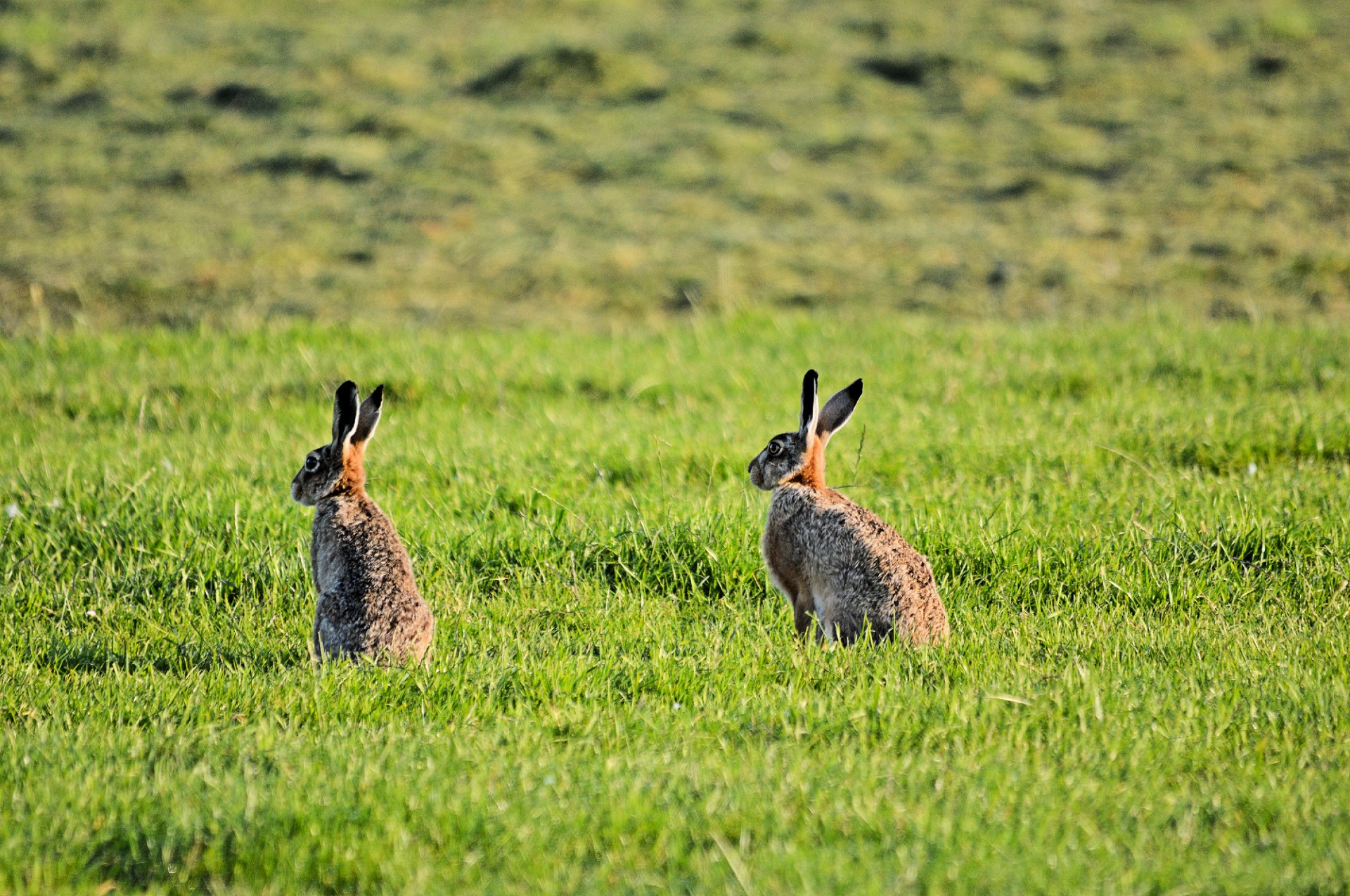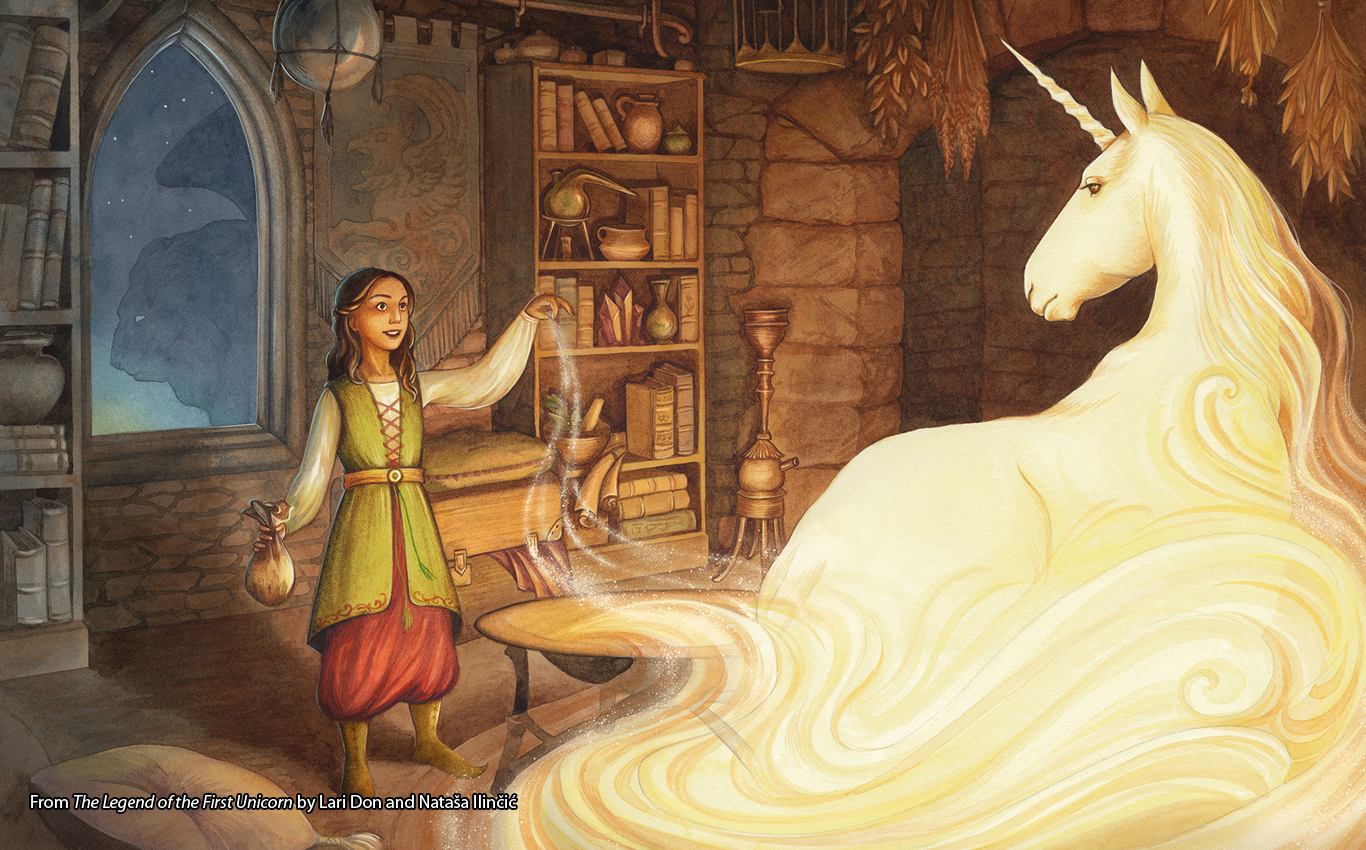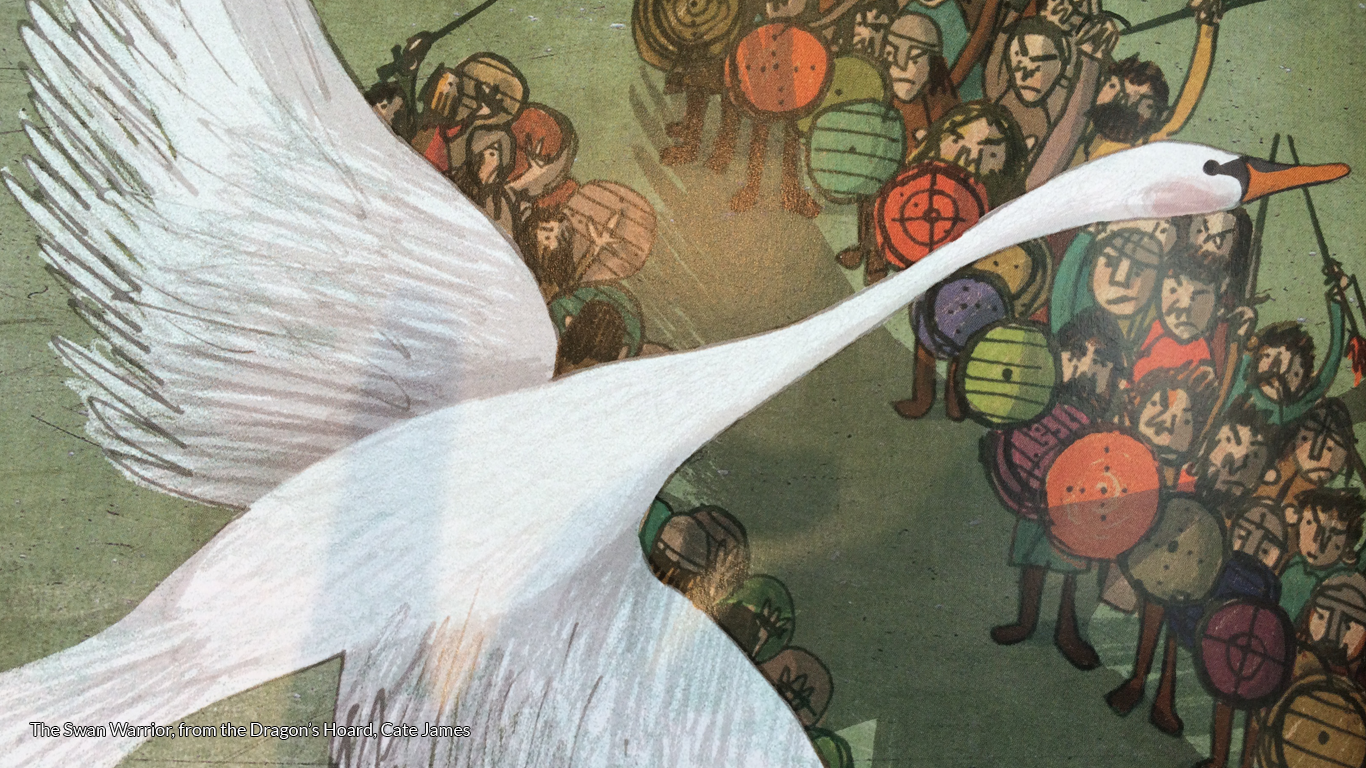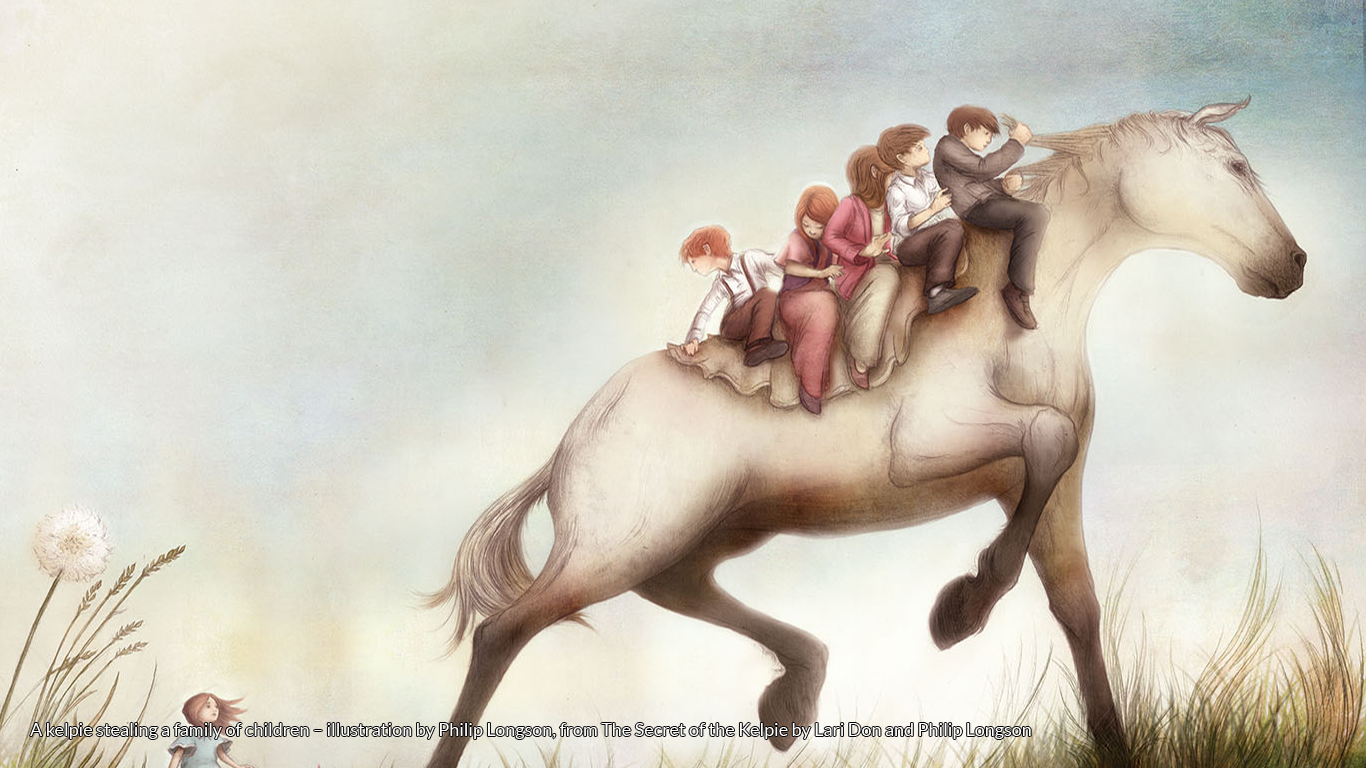Hares are widespread geographically, so hare stories are widespread culturally. Yet hares take on a surprising variety of roles in folklore, myth and legend.
As a child, I didn’t think of hares as magical. I was brought up in Speyside, in the rural North East of Scotland, and my first memory of a hare was my parents being impressed when our cat dragged home a dead one. As they were never impressed by the numerous rabbits this cat eviscerated on our doorstep, I realised hares must be special and different. My idea of a hare was a real wild animal — hard to hunt, difficult to catch, beautiful to watch — not a magical creature like a dragon or a unicorn. However, around the world, there may be as many magical hare stories as dragon tales, and probably more than unicorns…
I didn’t recognise the magical story aspect of hares until years later, when I began researching shapeshifters and realised hares had a specific magical connection to my childhood home. When I found the amazing (and rather insultingly titled, for anyone who cries themselves a quine) Primitive Beliefs in the Northeast of Scotland by JM McPherson, I discovered stories about witches transforming into hares. The idea of humans becoming hares fascinated me, but I didn’t know what to do with it (fictionally) until I read an old tale in Sorche Nic Leodhas’s Thistle and Thyme about a woman who was turned into a blue-eyed hare by a witch. That image stuck with me for years: a young woman transformed into a hare, not by choice, not as a power, but as a terrifying trap and a dreadful fate (and yet, what a form to be trapped in: the fast, elegant form of a hare!)
Over time, those connected ideas of witches, hares, transformation, and choice became the heart of my new adventure trilogy for kids: the Spellchasers trilogy. Once I realised I was going to be spending three books with magical hares, I began to research the role of hares in traditional tales. Though I only scratched the surface, like a hare scratching a form in a field, rather than a rabbit digging a deep burrow, I was amazed at the widespread, varied nature of hare folklore and mythology.
There are hares as goddesses and the companions of goddesses, hares as messengers, as fertility symbols, and as tricksters. Hares are associated with Easter and eggs, with madness in March, with the moon, with the elixir of life, with the last corn standing at harvest-time, with sacrificing themselves in fires, and with shapeshifting and witchcraft.

Some of these links may come from our ancestors’ observations of wild hares. The fire connection may have arisen because a hare’s way of dealing with threats is to hunker down and hide, hoping not to be seen, until the very last moment when it leaps up and runs off. So when stubble in fields was being burnt, a hare might wait until the last moment, then leap up and through the flames in an attempt to escape.
As I hunted for inspiration in traditional tales, I glimpsed many intriguing hares, including:
The Algonquin Great Hare from North America, who brought summer to defeat winter;
The hare from Ceylon, who threw himself into the fire to feed Buddha and was rewarded by being placed on the moon;
The African trickster hare, who become the American trickster Brer Rabbit when he crossed the Atlantic;
The famously fast hare from Aesop’s fables;
The Indian hare, who tricked a lion into fighting his own reflection (rather than eating the hare!)
My favourite Welsh hare is the one Gwion became to escape Ceridwen after he accidentally stole the wisdom she was brewing for her son;
My favourite Irish hare is the one Oisin injured, then followed to find an underground hall and an injured woman on a throne;
My favourite English hare is the one Boudicca kept inside her tunic before a battle with the Romans, so when she let it run free, the hare’s path was read as an omen for her warriors’ victory. Boudicca’s use of a hare feels very appropriate. There are lots of hares in the ancient tales of the British Isles, because the hare is native. The rabbit doesn’t star in nearly as many stories, because the rabbit was brought here relatively recently (in traditional tale terms) by the Romans.
But of all the hares, I feel the strongest connection to the shapeshifting Scottish hares of my childhood home and their sister tales in other parts of these islands. The stories of hares being injured and those ‘bites and rives and scarts’ showing on human bodies, or of hares shot with crooked sixpences transforming into dying old women.
Isobel Gowdie of Auldearn, when accused of witchcraft, claimed to become a hare with the words:
I sall goe intill ane haire
With sorrow, and sych, and meikle care
And I sale goe in the Divellis nam
Ay whill I com hom againe
The dark history of the witch trials and torture associated with these tales reminds us of the nasty reality behind many of the stories we enjoy sharing on #FolkloreThursday.
But hare stories aren’t all dark. While digging into my childhood memories for this post, my brother and I recalled how we used to say ‘rabbits’ on the last night of a month and ‘hares’ on the first morning of a new month. Hares and their sudden leaps have often been associated with dawns, new months, and new beginnings — which is good, because I’ve just finished my shapeshifting Spellchasers trilogy, so now I have to decide what adventure to leap into next!
The hare is fast, tricksy and elusive. A single unifying theme in hare lore is equally hard to pin down. Even so, it’s worth chasing the hare through stories, for the pleasure of the occasional glimpse of this fleet, beautiful, magical creature.
Win a copy of The Beginner’s Guide to Curses by Lari Don (the first book in the Spellchasers trilogy) this month; plus a £5 voucher to spend on the DiscoverKelpies website for every reader!
The wonderful folks over at DiscoverKelpies have offered a copy of The Beginner’s Guide to Curses (the first book in the Spellchasers trilogy) for one lucky newsletter subscriber this month! Sign up for the #FolkloreThursday newsletter to enter (valid July 2017; UK & ROI only).
DiscoverKelpies have also offered a £5 voucher for every #FolkloreThursday reader to use on their website — find the code in the July newsletter!
‘When Molly finds herself in a curse-lifting workshop with four magical classmates — a kelpie, a dryad, a sphinx and a toad — she’s determined not to believe in it. But it’s true that whenever a dog barks, Molly suddenly becomes a small and very fast hare… How long can she keep not believing?’
Do check out the other books in the Spellchasers Trilogy: The Shapeshifter’s Guide to Running Away and The Witch’s Guide to Magical Combat.

Recommended Books from #FolkloreThursday
References & further reading
Primitive Beliefs in the Northeast of Scotland, J M Macpherson, 1929, Longmans Green and Co.
Thistle and Thyme, Sorche Nic Leodhas, The Bodley Head, 1965









